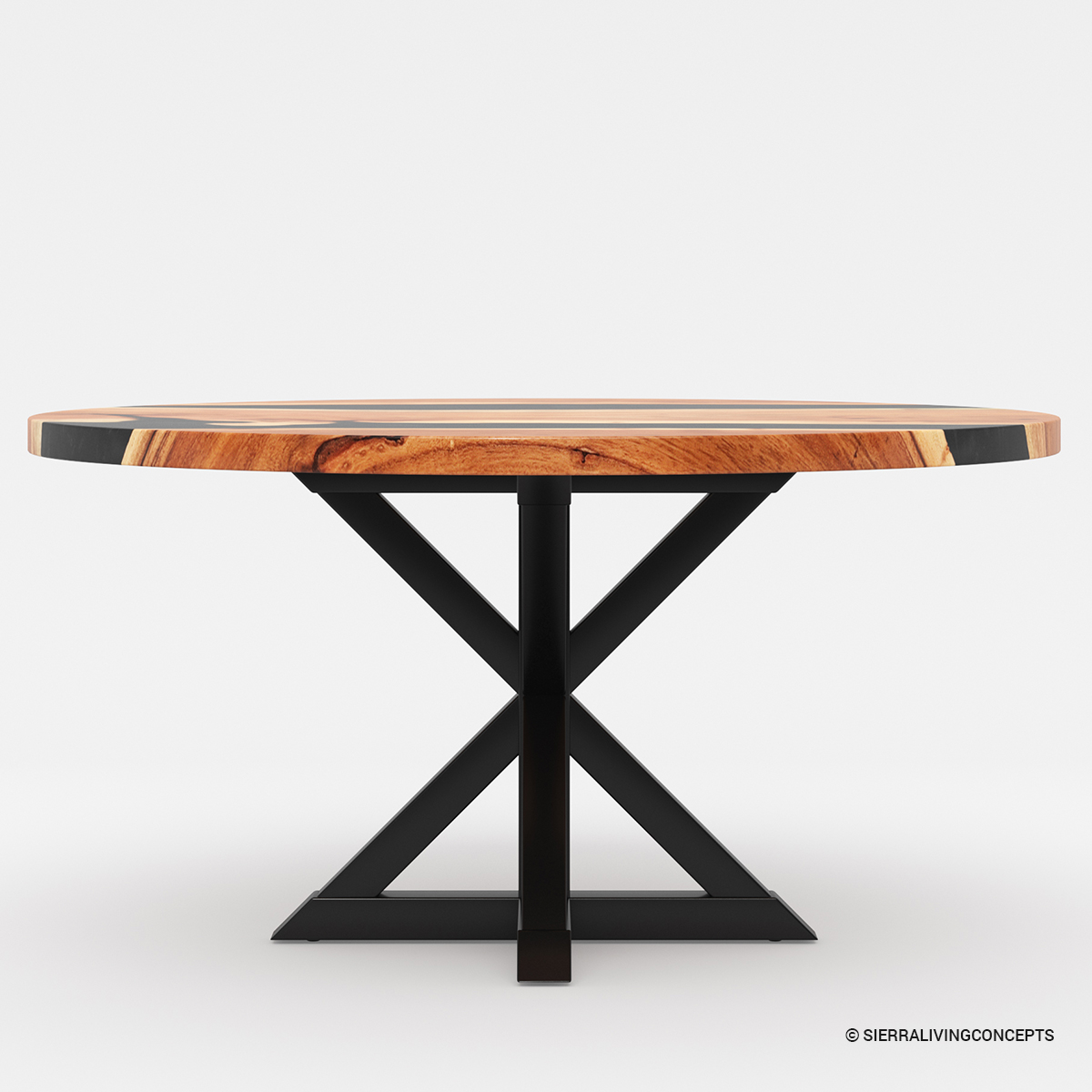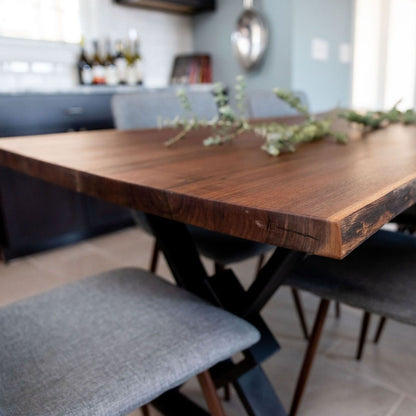The Impact of Dining Room Table Legs on Your Table's Overall Design
How to Select the Perfect Eating Area Table Legs for Your Home Decoration
Choosing the optimal dining room table legs is a nuanced procedure that calls for mindful factor to consider of different elements, including your room restraints, visual preferences, and practical demands. The interaction between products, measurements, and designs can substantially influence the setting of your eating area, making it essential to approach this choice systematically.
Assess Your Dining Room
Examining your dining room is important for selecting the right table legs that enhance both appearances and performance. Begin by measuring the dimensions of your eating area, consisting of ceiling height, flooring space, and closeness to other furnishings. This information will certainly assist establish the appropriate dimension and height of your eating table, which directly influences the choice of table legs.
Next, think about the style and design of your dining area. An open-concept layout might benefit from table legs that use visual agility, such as slender steel or acrylic choices. Alternatively, an extra typical setting could call for durable wooden legs that supply a sense of durability.
Review the existing shade palette and products in your eating area. Balancing the table legs with these components produces a natural appearance that improves the overall style.
Inevitably, a comprehensive analysis of your dining room will lead you in making a notified decision, ensuring that your table legs not only boost the aesthetic allure yet likewise serve functional objectives.
Consider Your Design Preferences
When picking dining-room table legs, it is vital to review your individual style preferences, as they substantially affect the general visual of your eating room. Your option of table legs can either complement or comparison with existing décor, making it vital to straighten them with your recommended indoor style motif.
If your home leans towards a contemporary aesthetic, consider sleek metal or minimalist wood legs that supply a tidy, minimalist look. For an extra typical method, ornate wooden legs with detailed makings can include a touch of sophistication and class. Industrial styles benefit from durable, basic materials such as reclaimed timber and metal mixes, reflecting a rugged beauty.
In addition, farmhouse and rustic designs often favor sturdy, chunky legs that stimulate a sense of heat and comfort. Conversely, if your decor is diverse, you may choose unconventional shapes or a mix of materials to create visual passion.

Evaluate Product Options
The selection of product for dining space table legs plays a pivotal role in both longevity and visual appeal. Typical products consist of wood, metal, and composite choices, each offering distinct characteristics that can affect the general appearance and longevity of your table.
Timber is a timeless option, recognized for its heat and flexibility. Hardwoods like oak and walnut supply extraordinary strength and can be completed in numerous spots to match any kind of design. Softwoods like pine are much more vulnerable to scratches and dents, making them less optimal for high-traffic locations.
Metal legs, usually crafted from steel or aluminum, radiate modernity and industrial beauty. They are resistant and highly sturdy to use, making them suitable for family members with children or frequent gatherings (dining room table legs). In addition, metal can be ended up in numerous colors, improving the personalization opportunities
Composite materials, such as MDF or laminate, offer affordability and diverse designs. While commonly much less durable than solid wood or metal, they can still supply a stylish appearance and are usually simple to maintain.
Ultimately, the material you select need to line up with your way of life, aesthetic preferences, and the level of use your table will experience.
Determine Elevation and Dimension
Choosing the proper elevation and size for your dining-room table is essential for both capability and comfort. The typical elevation for eating tables normally varies from 28 to 30 inches, permitting adequate legroom for many people when seated. It is vital to think about important site the dimensions of your eating room and the types of chairs you intend to make use of.

In addition, think about the percentages of your dining-room. A bigger table in a roomy location can develop a grand setting, while a smaller sized table functions well in more intimate setups. Inevitably, the best elevation and dimension will certainly harmonize with your total decor and enhance the dining experience for you and your visitors.
Explore Customization Opportunities
Additionally, the style of the legs can be personalized to fit different designs, such as rustic, modern, or commercial. For example, tapered legs can stimulate a mid-century modern-day feel, while beefy, block-style legs may resonate with conventional or farmhouse design.
Property owners can additionally discover color coatings, from all-natural timber stains to paint, enabling them to match or contrast with the table top and surrounding design.
Additionally, leg elevation can be readjusted to accommodate certain seating plans or individual choices, enhancing both convenience and capability.
Last but not least, unique decorations, such as makings hop over to here or ornamental braces, can additionally individualize the table legs, making the eating experience not simply a statement but a dish piece in the home. By thinking about these personalization choices, house owners can develop an eating area table that really reflects their uniqueness.
Conclusion
Selecting the ideal dining-room table legs calls for mindful consideration of various variables, consisting of the measurements of the eating area, design preferences, product toughness, and wanted elevation. Customization alternatives even more enhance the capability to accomplish a cohesive visual that matches the total decor. By systematically evaluating these components, property owners can make sure that the picked table legs not only satisfy useful needs however additionally add favorably to the dining experience and setting of the home.
Selecting the ideal dining area table legs is a nuanced procedure that requires cautious factor to consider of different aspects, including your space restrictions, visual choices, and practical needs.Assessing your eating space is important for choosing the right table legs that match both visual appeals and performance.When determining dimension, gauge the area where the table will be put to ensure it fits pleasantly, permitting for at the very least 36 inches of clearance around the table for very easy activity. A larger table in a roomy area can develop a grand ambiance, while a smaller table functions well in more intimate settings.Picking the suitable dining room table legs requires careful consideration of various elements, consisting of the try these out dimensions of the dining area, style preferences, product durability, and preferred elevation.